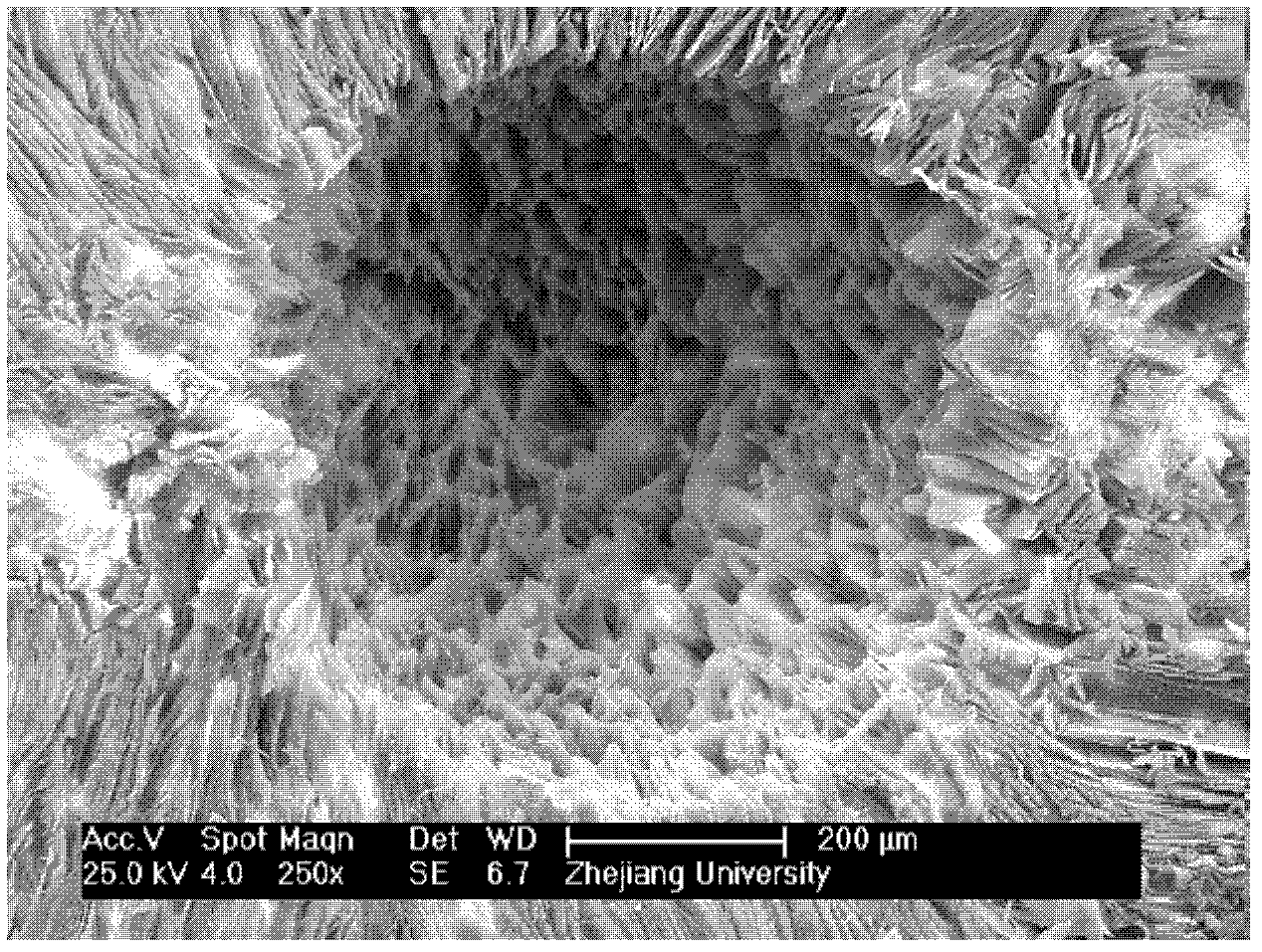Method for preparing polymer porous microspheres through mixed phase separation
A technology of porous microspheres and polymers, applied in the direction of microsphere preparation, microcapsule preparation, etc., can solve the problems of reducing the porosity and strength of microspheres, and achieve the effects of wide size control range, simple preparation method, and wide application range
- Summary
- Abstract
- Description
- Claims
- Application Information
AI Technical Summary
Problems solved by technology
Method used
Image
Examples
Embodiment 1
[0021] Select ethylene glycol as the additive, N, N-dimethylacetamide as the solvent, the mass ratio of the additive to the solvent is 1:4, and the mass ratio of polyvinylidene fluoride to the solvent is 3:14, and mix them evenly in a three-necked flask , heated to 90°C, fully stirred to prepare a homogeneous solution, and allowed to stand for defoaming. The spinning solution was injected into ice water at 0°C with an injection needle to make spherical particles. The obtained spherical particles were soaked in ethanol at 0°C for 60 minutes to extract ethylene glycol and N,N-dimethylacetamide, then soaked in n-hexane for 30 minutes to replace the ethanol, and then vacuum-dried the porous microspheres at 30°C for 6 hours , to obtain polyvinylidene fluoride porous microspheres with an average diameter of 1.8mm and a porosity of 78.8%.
Embodiment 2
[0023] Select dimethyl sulfoxide as the additive, N,N-dimethylformamide as the solvent, the mass ratio of the additive to the solvent is 1:1, the mass ratio of polyacrylonitrile to the solvent is 6:17, mix in a three-necked flask Evenly, heat to 90°C, stir well to prepare a homogeneous solution, and let it stand for defoaming. The spinning solution was injected into ice water at 0°C with an injection needle to make spherical particles. The obtained spherical particles were soaked in ethanol at 0°C for 30 minutes to extract dimethyl sulfoxide and N,N-dimethylformamide, then soaked in n-hexane for 20 minutes to replace the ethanol, and then the porous microspheres were vacuumed at 40°C After drying for 8 hours, polyacrylonitrile porous microspheres with an average diameter of 1.9 mm and a porosity of 83.0% were obtained.
Embodiment 3
[0025] Choose dimethyl sulfone as the additive, N, N-dimethylformamide as the solvent, the mass ratio of the additive to the solvent is 10:1, the mass ratio of polyacrylonitrile to the solvent is 11:9, mix well in a three-necked flask , heated to 130°C, fully stirred to prepare a homogeneous solution, and allowed to stand for defoaming. The spinning solution was injected into water at 10°C with an injection needle to make spherical particles. The obtained spherical particles were soaked in ethanol at 10°C for 30 minutes to extract dimethyl sulfone and N,N-dimethylformamide, then soaked in n-hexane for 20 minutes to replace the ethanol, and then vacuum-dried the porous microspheres at 30°C After 8 hours, polyacrylonitrile porous microspheres with an average diameter of 2.1 mm and a porosity of 88.6% were obtained.
PUM
| Property | Measurement | Unit |
|---|---|---|
| The average diameter | aaaaa | aaaaa |
| The average diameter | aaaaa | aaaaa |
| The average diameter | aaaaa | aaaaa |
Abstract
Description
Claims
Application Information
 Login to View More
Login to View More - R&D
- Intellectual Property
- Life Sciences
- Materials
- Tech Scout
- Unparalleled Data Quality
- Higher Quality Content
- 60% Fewer Hallucinations
Browse by: Latest US Patents, China's latest patents, Technical Efficacy Thesaurus, Application Domain, Technology Topic, Popular Technical Reports.
© 2025 PatSnap. All rights reserved.Legal|Privacy policy|Modern Slavery Act Transparency Statement|Sitemap|About US| Contact US: help@patsnap.com


